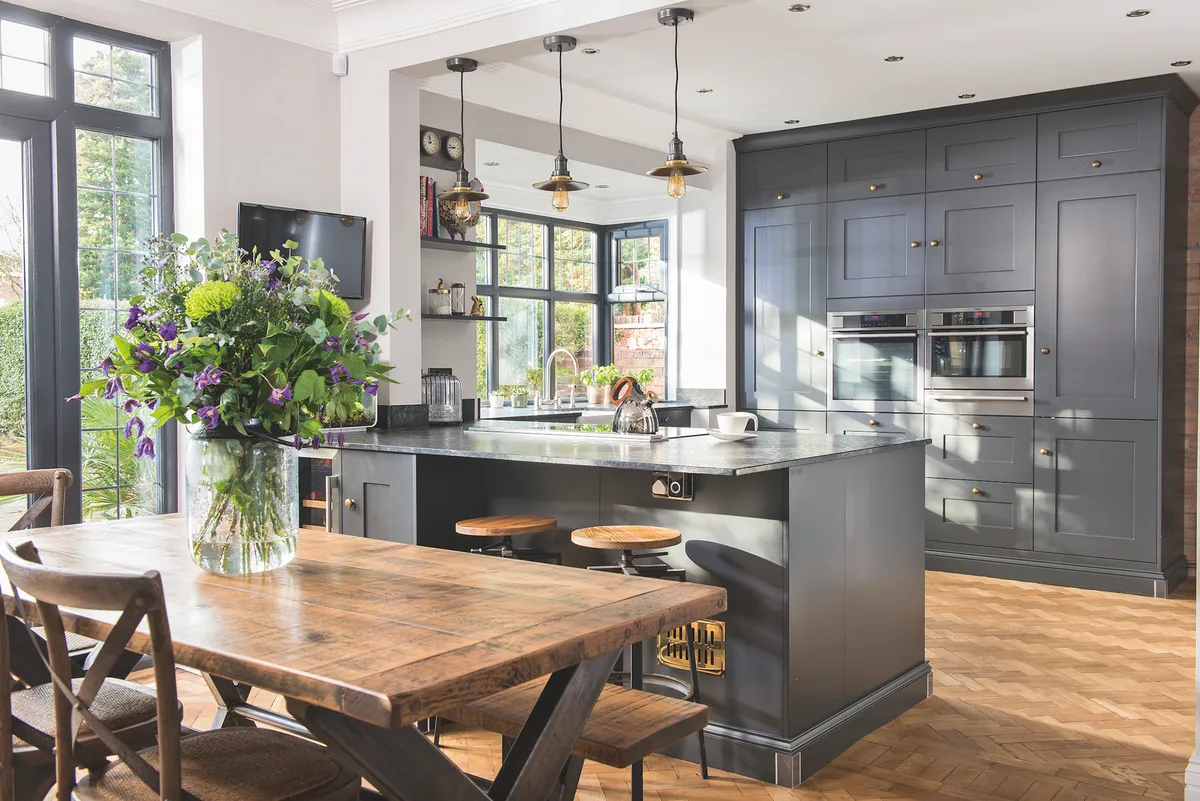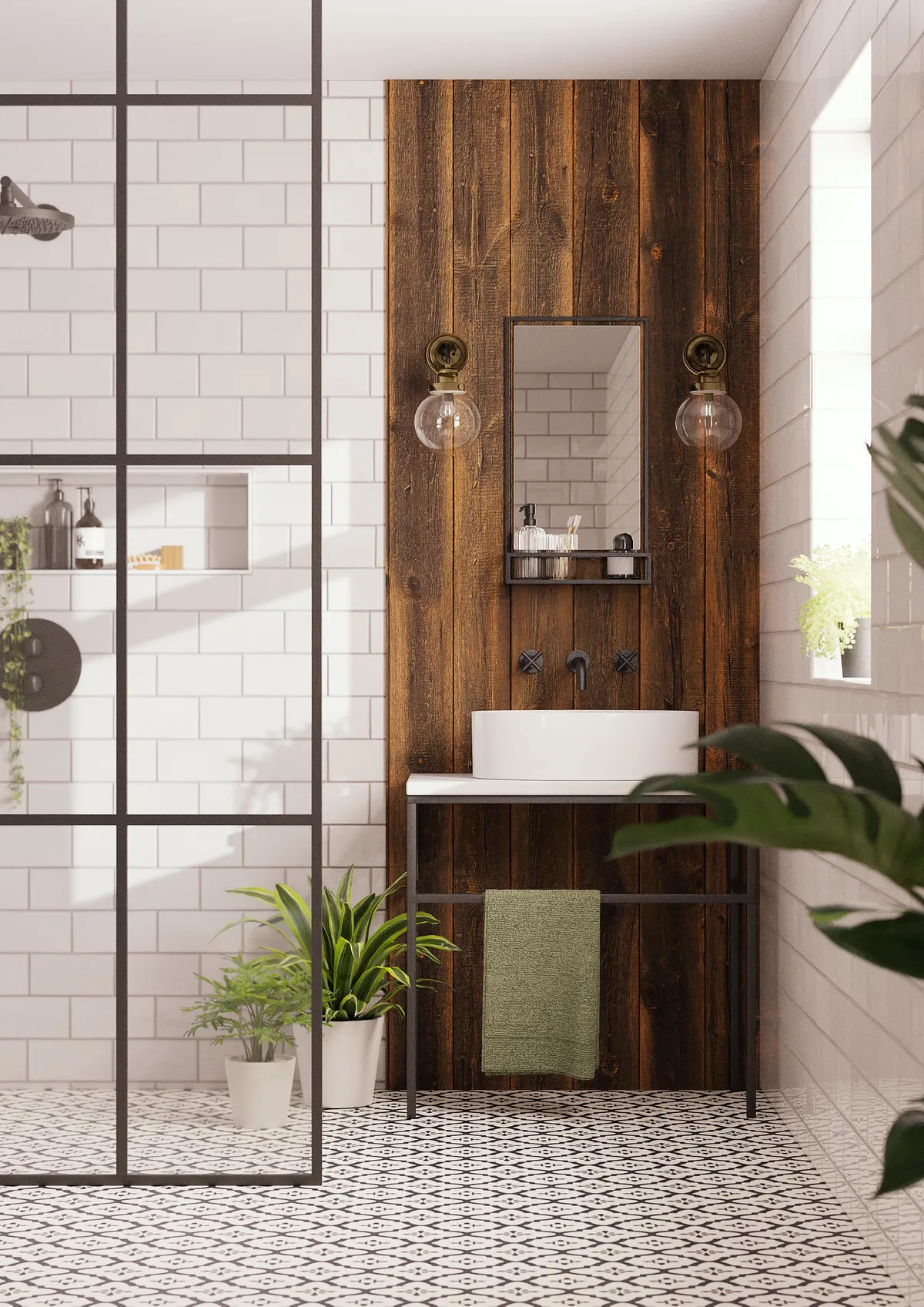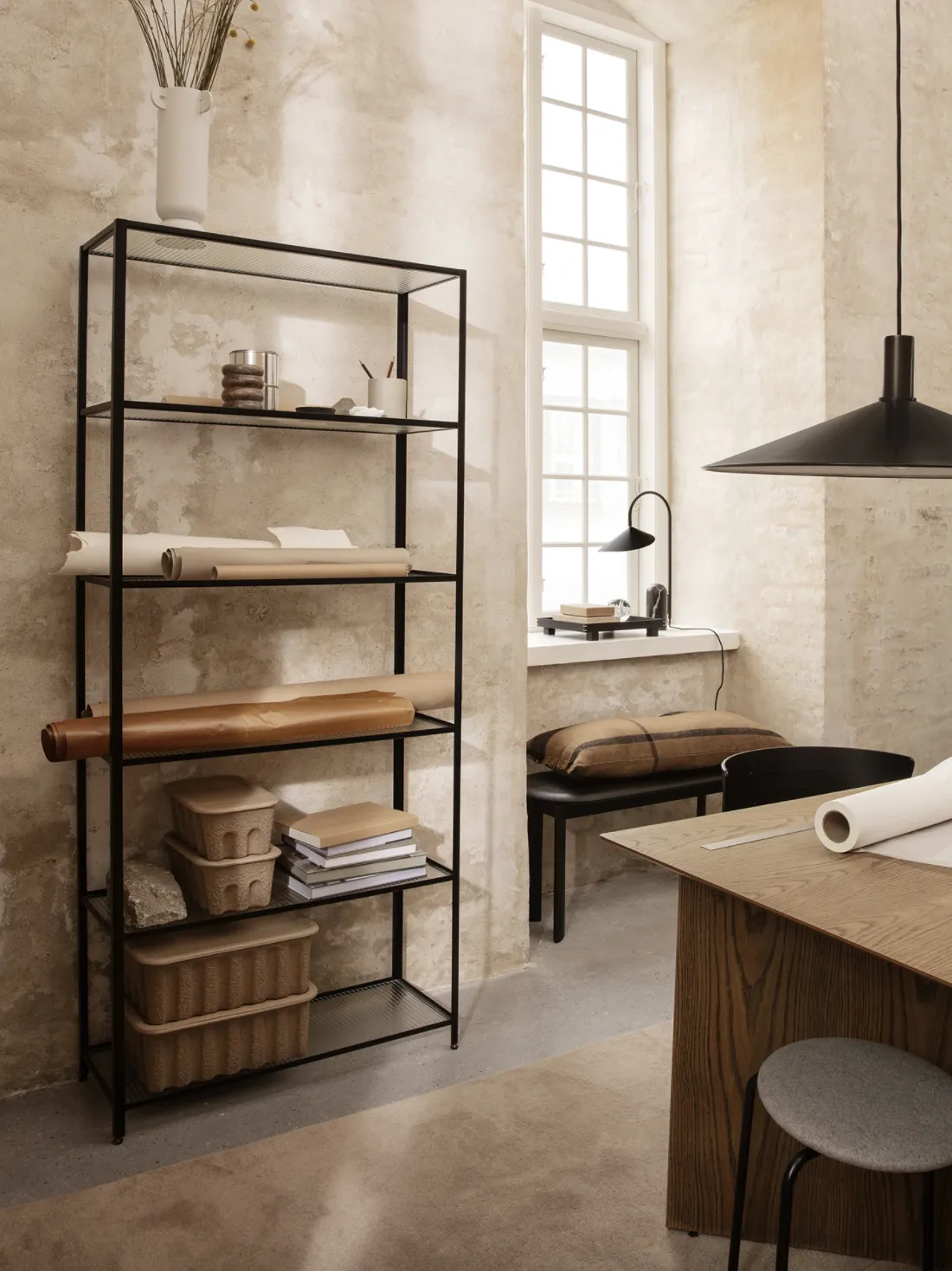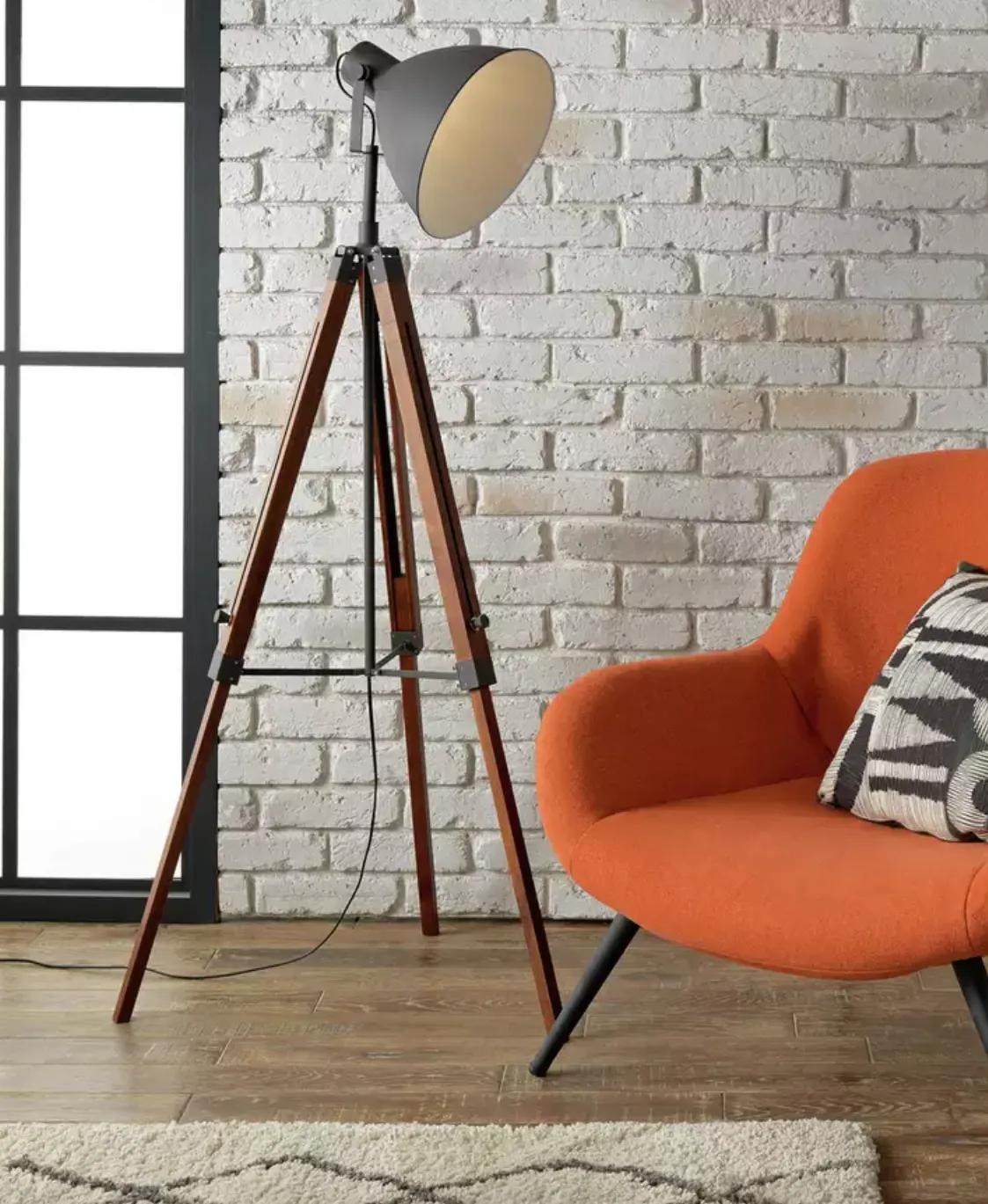The popularity of industrial design interiors has been steadfast over the decades, from Andy Warhol's New York studio The Factory in the 1960s to the minimalist studio flats of the 1990s and 2000s. Like traditional, period interiors or minimalist Scandi-style homes, industrial-style interiors have stood the test of time and are proven to be a chic and timeless choice when making over a home.
What is industrial style?
After the decline of the industrial revolution, there was a boom in converted factories and warehouses in urban areas and cities across the world. These large, open-plan buildings were perfect for turning into flats, galleries, restaurants, offices and bars. Now, people were being exposed to a type of interior that had previously only been seen by industrial workers. The practical, no-frills style of the factories was becoming a whole new trend.
Nowadays, we sum up industrial interior design as urban, art-conscious and minimal. Industrial interiors highlight the architectural features of a building and celebrate the functionalities of the space, embracing them rather than covering them up. Stripped back paint, exposed air vents and pipes and bare brick walls are just a few examples.
If you think you need a sprawling studio flat or converted warehouse space to achieve the industrial look, think again! By sticking to our five-point guide below you'll be able to get this raw and contemporary style no matter what type of home you have, whether it's a cottage in the country or a new-build in the city. These key design elements can also work well with a range of other interior styles such as boho, mid-century modern and Scandi, so you can tap into the industrial trend as boldly or subtly as you like.
Key characteristics of industrial style interiors
- Exposed brickwork
- Open-plan spaces
- Earthy & metallic colour palette
- Stripped back paint & raw plaster walls
- Distressed furniture
Read on for our breakdown of each style element...

Industrial interior inspiration
Exposed brickwork

When we close our eyes and think of industrial interiors the first thing that comes to mind is exposed, rustic brick walls. Exposed walls bring a factory or studio vibe to a space and create a wonderful backdrop for wooden furniture.
Take the plunge and expose a single wall in your home to start with. It will give a satisfying zoning effect in an open-plan room such as a kitchen diner. It will also add depth and interest to eaves or alcoves.

Not keen on the red brick look? You could paint the bricks in a statement shade or in minimalist white instead. Or how about exposed concrete walls for a more brutalist industrial look? You can always cosy it up with snuggly bouclé fabrics and velvet furniture.
If you live in a rented property or don't fancy stripping off your wall plaster, you could try faux brick wall wallpaper. Check out some of our favourite places to buy wallpaper.
Open-plan spaces
With its origins in factories and warehouses, it's only logical that industrial interior design is centred on big, open-plan spaces, often with high ceilings and large, floor to ceiling windows.There are both pros and cons to living in such a space. On the one hand, open-plan living is perfect for social gatherings and makes a great layout for couples and singletons, but on the other hand, if you have a family and prefer time to yourself, you might find the lack of privacy tricky. Luckily, there are solutions for both standpoints.

If you're after more open space in your home, there are many ways of creating the illusion of it. One trick is to use the same flooring across multiple rooms to give a feeling of unity throughout. Removing doors in favour of open archways or fold-away doors will also open things up more. Bifold doors which open out into the garden will bring in more light as well as making the outdoor space feel like another room.
If you already live in an open-plan home and are after some quiet nooks and crannies, you can create room-like zones through room dividers, rugs, ambient lighting and furniture to create more privacy. Even large houseplants can create an effective parameter!
Best shops for industrial homewares

Earthy & metallic colour palette

The colour palette of industrial interiors is predominantly made up of the raw materials of the building and the industrial-style furniture within it. More often than not, a building's raw materials are wood and metal, such as wooden floorboards and exposed pipes and frameworks.
Industrial-style furniture took its cues from these materials too, with wood and metal being the stand out factors of dining tables, cupboards, chairs and storage. Worn-in leather is also a prime choice for sofas and armchairs, which ties in with the earthy shades of wood and brushed copper.
All together this creates a raw yet warm colour palette that contrasts cool metallics with cosy wooden accents. You could boost the colours further by introducing accessories, such as vases, crockery and lighting, in the same colourways.

If you don't want to go all-out with wooden and metal finishes, you could incorporate subtle touches, like this industrial-boho style bathroom from Dunelm which ties in minimal metro tiles and decorative floor tiles alongside the statement wooden slatted sink area and crittall style shower. The industrial-style exposed bulb lights are another easy way of tapping into the trend.
Check out our other style guides
- Mid-century modern design: how to embrace the retro interior trend
- Japandi style: how to use it in your home decor
- Boho decor 101: the best bohemian style ideas
- Edwardian house style: how to spot the period features of the era
- Scandi style 101: how to embrace Scandinavian decor in your home
- Shabby chic ideas: how to achieve this charming decor style

Stripped back paint & raw plaster walls

The raw plaster wall look has become a trend in itself over the last year, with many opting for bare walls over paint and wallpaper. It works especially well with a rustic industrial style interior and adds a charming cosiness to rooms.
For even more of a grungy, rustic look, you could experiment with stripping off existing wallpaper to create a textural look to your walls. Be sure to add plenty of soft textures through cushions, blankets and rugs to keep your space from feeling cold.

The exposed plaster walls, along with the metal bed frame and wooden floors, make this a fine example of an industrial-style bedroom. The subdued colours are ideal for a restful sleep and the Berber rug makes things even cosier.
Distressed furniture

Whether it's a second-hand table or a well-loved leather sofa, industrial furniture is all about looking well-used and authentic. Etsy and Facebook Marketplace are great places to search for pre-loved furniture items, or if you fancy it, you can learn how to distress furniture bought new too.

Keeping in line with the studio vibes of industrial interiors, you'll find many furniture items are inspired by warehouse pieces, such as practical studio-style lights, tables on wheels, trolleys and open shelving and storage.
Looking for more interior inspiration from history? Check out our style guides to Mid-century modern, Art Deco, Georgian, Victorian & Edwardian houses!

